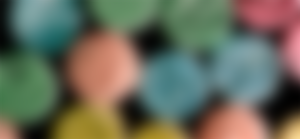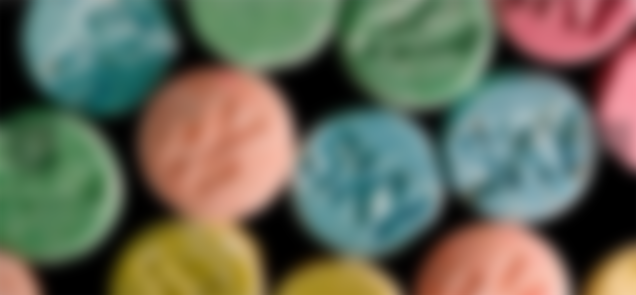We have heard and read many times about the close connection between drug use and the creation of musical art. The number of the greatest musicians who did not give in to temptation and remained completely sober while creating is really small. Drugs were present practically everywhere.
Anyone who knows little about the music business knows how strongly drugs are associated with musicians. The most common is marijuana - harmless, slowing people down, much like the sedative Kethamine or Xanax.
People experimenting with LSD should be careful, especially not to be too close to windows or terraces, as they may be quickly overtaken by the sudden need to fly. Heroin, despite having the scariest name, is relatively harmless if the user does not overdo it or have the misfortune to be caught during the purchase.
Worse than heroin is the target amphetamine. Hitler was injected twice a day during World War II. Users become paranoid and see conspiracies against them at every turn. Guitarists, for example, become convinced that their assistants are tuning their guitars wrong to make them sound bad.
The worst drug is cocaine. People who can’t get it on time become neurotic. When they have too much of it, it drives them crazy. For the most part, however, drugs and music are pretty well understood. The musicians have been faithfully followed since the mass migration from New Orleans to Chicago onwards, that is, from the times when marijuana became more widespread due to prohibition. Nevertheless, drugs have never had such an impact on music as it seems in general. They had a greater impact on the circumstances in which the music is listened to. In three cases, however, drugs had a strong effect on music.
1.AMPHETAMINE
Amphetamine-Speed is a stimulant that speeds up the normal functioning of the body and increases alertness. It is most commonly sold in the market in the form of amphetamine sulfate.

In the late 1940s and early 1950s, amphetamine pills were taken by truck and bus drivers to help them stay awake on long journeys across America. Country musicians in the southeastern United States soon began purchasing them from them. Young Johnny Cash received benzedrine (amphetamine) instead of a tip during performances at the Nachez Club in Memphis. His songs, however, became faster. Jerry Lee Lewis ’wild piano banging was also the result of amphetamines. Amphetamine was actually one of the most important things that influenced the development of country music in rock and roll. Which Elvis Presley later admitted: "My songs are bouncy country."
2.LSD
LSD is a powerful psychedelic substance, which means that it changes the way we receive and perceive our surroundings.The effects occur after 30 to 120 minutes and last from 8 to 12 hours. They largely depend on the set and setting. The set is a person's inner state (mood, emotional and mental state), and the setting is the state of his outer world (environment and relationships with the people around him at the time).
In the 1960s, LSD influenced the leap from small (one song) to t. i. "Long play" (20 minutes on one side) of the record. The three-minute songs were fluid on the man on the trip. Between 1966 and 1969, at the time of the rise and fall of LSD, long play records, which featured about 40 minutes of music, completely replaced the three-minute small records, which until 1966 were the best-selling music product. Music labels have made a fortune with LSD records. They had almost nothing to invest in promotion, they were undemanding in terms of production; which sold themselves on their own.

In the 1970s, amphetamine returned in the form of sulfate, which users “sniffed” through the nose. Such ingested dust has wound up the rhythms of punk bands in the US and UK: the Ramones, the Sex Pistols, The Jam… The drug was extremely uncomfortable. As if inhaling "vests in the form of dust from the floors of dirty toilets." After inhalation, a bitter liquid ran down people's throats for another two hours.
A key topic can be said that the music industry has not promoted the use of certain drugs. Not until at least the 1980s. Ecstasy was something special. Chemically it is MDMA - methyl dioxin meta amphetamine. It was made synthetically in 1914; because it has a positive effect on human education, it is later used in CII as a watering drug. The small white tablet is easy to take. Like aspirin. Journalist Peter Nasmyth described the feelings after the first ecstasy: "Suddenly I knew I could trust all my secrets… strange, given that I only met half an hour ago and I didn't care for her at the time."
3.ECSTASY

Ecstasy is an entactogenic drug that causes feelings of euphoria, empathy, and connection to other people. It belongs to the class of phenethylamines and amphetamines, and has both stimulant and psychedelic effects. It also reduces the feeling of fear.The substance is closely associated with the electronic "rave" scene, and for some time it has also been used in psychotherapy.After oral administration, which is also the most common method of use, the effects occur after 20-90 minutes and last 3-5 hours.
In the mid-1980s, young, urban and successful New Yorkers began to carry ecstasy with them on summer vacations in Ibiza. And dance next to him. Ecstasy was once used to treat stray marriages and soldiers with trauma, but now it has caused a revolution in the way of dancing. Trust among strangers, all in good spirits, people have become whole. It was not just about empathy and caring for the other, but also about the energy for six- and multi-night dancing. The whole dance floor became a New Year’s Eve party. Every night, all night. The British in Ibiza watched the Americans and said we would too. They took the ecstasy home late in the summer and continued the party. And without the proper musical background it wouldn’t work. A new musical style developed.

In ecstasy, the individual song was not important, the emphasis was on rhythm, repetitive cuts and phrases. Choruses were replaced by audible signals, such as loud laughter or something similar. DJs were getting more and more creative. With the help of electronics, they started playing with music and dancers.
4.SHOOM
When DJ Danny Rampling returned from Ibiza in the late summer of 1987, he decided to open a new club in Southwark, specializing in new music as well as new drugs. In the former fitness center, which had room for 200 people, he opened the Shoom club. He took care of the right plates, the right equipment, and also that his 200 visitors got the right drugs. The new music quickly got its name, Acid House. Did the club advertise with flyers that said "Can you take the Acid test"? It was a copy of leaflets distributed in California by Merry Pranksters in the 1960s, a group that promoted LSD in humans at the time. Since Shoom was small, Rampling decided for himself who could come into it. He cared for a balanced clientele: pop stars, workers, even football fans came in. Violent fans who attacked others with knives at parties a year ago danced and hugged everyone at the club.
One night, visitors danced full of ecstasy until morning and at six in the morning they continued dancing right on the street in front of the club. When the police appeared with sirens, they shouted at them, “Can you feel it? Can you feel it? ”, Because it was a song in which the police siren sounded and at which they went crazy in the club a few hours ago.
ECSTASY clubs have started to grow in all parts of London: Spectrum, The Dungeon, Clink Street, The Trip. In Manchester, a new scene developed in just two or three weeks. The main one was The Hacienda Club, there were so many people in it that they danced on the stairs and the bigger ones. Entrepreneurs responded quickly and transformed the clubs into ever larger halls. Admission: £ 15, ecstasy: £ 15. They also moved from clubs to the countryside. People were riding buses on the Sunrise Mystery Trip in Buckinghamshire. They even occupied the Glastonbury Rock Festival. The party at a nearby park began at three in the morning, and Glastonbury visitors who wanted to sleep and get ready for a new rock day had to listen to loud bass all night.
The biggest record labels recognized the novelty and got caught in a noose. It was clear that promoting boards also meant promoting drugs. The songs contained more and more references to ecstasy, but managers didn’t notice this. The BBC regularly played the song "Ecstasy for England" by New Order, thinking they were cheering for English footballers, and connoisseurs laughed along. While the BBC launched an anti-drug campaign, the song “Ebeneezer Goode” by The Shamen came to the top of their chart with the undoubted message of the refrain: “Ecstasy is good”.
Labels have become aware of the new trend and have started releasing special editions of songs tailored to different clubs and styles. The songs were released in versions for fans of marijuana, cocaine, amphetamines and so on. The same song was recorded and mixed with different rhythms. It should be noted that managers in publishing houses swore mainly on cocaine. They took it from morning to night and the hitters made important decisions.
By the end of the 1980s, drugs had become an integral part of the music industry. There have been more and more drug-related scandals in America, the UK and Europe. Instead of music tapes, couriers drove cocaine to the managers of the publishing houses, with which the publishing houses, among other things, began to pay the music editors of the radio stations to play their songs. In America, record labels are said to distribute cocaine to as many as 5,000 radio stations each week. Publishers, on the other hand, employed people whose job was to buy and distribute drugs.
In Europe, the raving scene was at its peak in the late 1980s.In the UK, alcohol producers, whose consumption began to decline significantly, were abused by the government in the early 1990s to start drug prosecution. The government has banned half-legal and unreported dance events. They moved from nature to warehouses, the underground scene became legal.Labels didn’t know how to cash in on new music. They wanted to release compilations without knowing who was supposed to edit them. They were overtaken by the clubs themselves.Big music labels were desperately looking for solutions and started hiring DJs.Other DJs began recording arrangements of top-ranked pop songs and adapting them to the club’s needs: they took away the vocals from the songs and reinforced the bass and rhythms. In songs, they often preserved only a single piece of verse and repeated it over and over again.The DJs didn’t know exactly what the club goers wanted. Even club goers didn’t know exactly what they wanted. If the DJs managed to hit the right feeling, club goers celebrated them as gods. DJs became the center of events, they became little gods on altars. Music magazines started writing about them, they became real stars.
Ecstasy slowly began to recede from clubs, drinking alcohol became fashionable again, clubs were getting better equipped, sexy, and so did visitors.
Teenagers have learned to use drugs wisely. A research institution wrote in a report that "young people who occasionally use drugs are just as social, sensitive and moral as those who do not use drugs." Drugs have become a normal part of their lives. The right drug at the right time, ecstasy or cocaine for Saturday at the club, a joint to calm down and listen to music, etc.
In parallel with the development of drug use, EDM, electronic dance music, electronic dance music also developed. It revolved everywhere, from Rio to Buenos Aires, from Beijing to Tokyo. Only America failed to convince her. There they wanted something stronger.
Photos are taken from google.com.
Thank you for reading my article.

I send you my best wishes and greetings.
@Purebeauty.





Drugs are a silent killer! Young people first start using drugs in society, for fun or sometimes because of some problems that happen in their lives. We are witnessing that a large number of artists of the music scene use narcotics.